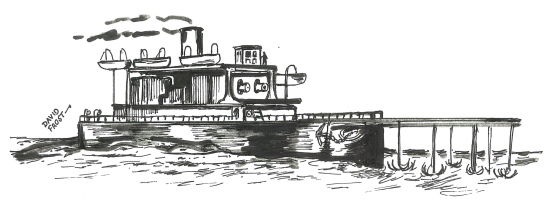
illustration - David Frost
1872 saw the ability of the two masts to be "converted into an apparatus for catching torpedoes, they being set out in front of the ship, and connected together by a spar 45 feet long, to which half a dozen grapnels were attached."
Illustrated Australian News April 23 1872The torpedoes refered to were what are now called mines. The two wooden masts protruded from the hawse holes.
Dead Point Firing Gear"One very neat piece of mechanism, known as the dead-point firing gear, was design by Mr. Break(s), the second engineer of the vessel, to remedy a defect which had long been manifest in the working of the guns, and which had in the case of a vessel belonging to the Imperial navy, and more recently in the case of the Cerberus itself, led to considerable damage. The vessel first alluded to — H.M. turret-ship Monarch went to quarters late one night, and in the hurry and bustle prevailing the guns were fired while the muzzles were considerably depressed, the result being that the whole of the fore part of the vessel was battered by the immense 400lb. projectiles intended for the enemy. A similar accident happened several years ago to the Cerberus, on the occasion of some members of the Williamstown Artillery indulging in shot practice. In order to prevent the possibility of the recurrence of such a mishap, Mr. Break(s) designed an apparatus which renders it impossible to work the firing gear while the muzzles of the guns are in a line with the deck or any of its fixtures. A contrivance of a similar purpose, the invention of Captain Ainslie, has been adopted in the Imperial navy, but as this had never come under Mr. Break's notice he is entitled to the full credit of the present invention, which is an original idea. "She has also been fitted with .... a contrivance by which the mishap of blowing away the deck's fittings is rendered impossible. This is also an invention of one of the engineers, and is so effective in its action that the after turret is to be fitted with it also." |
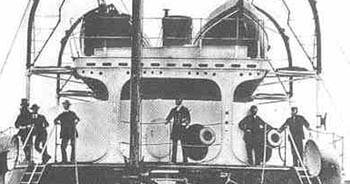
|
Flying Deck Shortened | |
The original Flying Deck was 20 feet wide and 112 feet (34.5 m) long. As can be seen in the left photo, it overhung the Gun Turrets and required two supports at each end. Prior to Jan 17 1888 the flying deck was shortened by 25 feet (7.7 m) (right photo) and the supports dispensed with. | |
 | 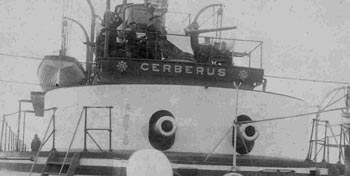 photo courtesy of Peter Baxter. |
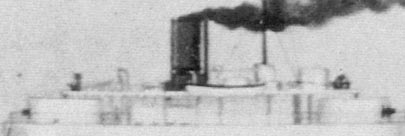 | The image at left is the earliest to show Cerberus with the shortened flying deck. It is from a representation of the 1888 Victorian Fleet Review. |
The support from the centre of one of the turrets is possibly shown in the closer shot (right) from the image below left. | |
 | 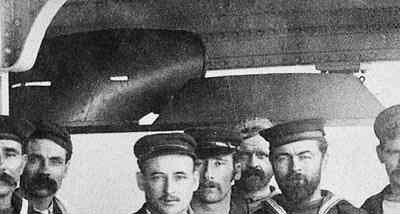 photos courtesy of Aust War Memorial AWM952.002 |
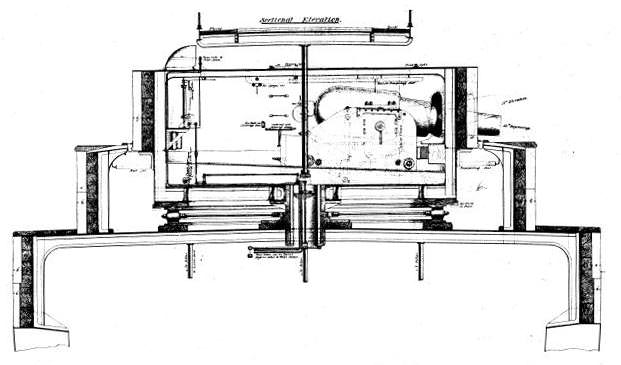 Cross Section view. note turret centre pin supporting flying deck. Drawing courtesy of Bob Nicholls | |
Firing of Guns from Conning Tower
Although the Cerberus guns could originally only be fired from inside the turrets, Engineer Breaks modified the gun circuits so that the guns could also be fired from the Conning Tower. A safety mechanism was fitted inside the turrets so that the guns could not be fired prematurely. A guage inside the conning tower advised the captain that the guns were ready for firing.
Further information is available on page 43 of the 1889 Torpedo Manual and on page 63 of the Manual for Torpedo Instruction & Electric Lighting which are available as free downloads.
|
|
